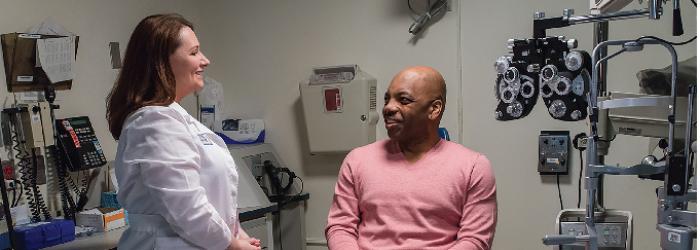NEI's clinical studies have been instrumental in helping drive evidence-based best practices in vision care — from finding new ways to test and treat eye diseases to figuring out that some common treatments don't work well. NEI's clinical studies on different eye diseases and conditions have led to new treatments.
By joining a clinical trial, you could help improve eye care for countless people in the future.

Learn about clinical studies
Find out about the different types of studies, the benefits and risks, and what to expect when you participate.
Learn more about current clinical trials studying new treatments:

Visit the Eye Clinic
NEI’s Eye Clinic hosts many clinical trials on the NIH campus in Bethesda, MD. Get directions, phone numbers, and other important information about the Eye Clinic.

Find a clinical study
Before joining a clinical study, it’s important to talk to your doctor about whether the study is right for you.
- To find out about clinical studies at NEI and other NIH institutes, visit the NIH Clinical Center website or call 1-800-411-1222. Most NIH studies take place in Bethesda, MD.
- To search for clinical studies across the United States and around the world, visit ClinicalTrials.gov.

Refer a patient to a clinical study
If you are a physician interested in referring a patient to NEI for a study, please call the Recruitment Coordinator at (301) 402-4726.
If there is an NEI investigator with the appropriate expertise, we can evaluate the patient to see if they qualify for an NIH clinical study. If the patient doesn’t qualify, NEI won’t be able to treat them.

Apply for funding to conduct a clinical study
Learn about funding opportunities at NEI and find out how to apply.

Find out about past NEI-supported landmark clinical studies
For over 50 years, NEI has supported landmark clinical studies on eye diseases and conditions to find new ways to prevent and treat eye diseases and prevent vision loss. The results of these studies laid the groundwork for today’s cutting-edge research.